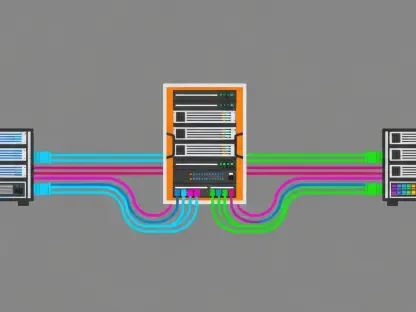What if artificial intelligence could both create masterpieces and predict futures with remarkable accuracy? This thought-provoking question opens the door to one of the most fascinating discussions in the tech world today—Generative AI versus Predictive AI. These two branches of artificial intelligence, though intertwined in the fabric of modern technology, serve profoundly different purposes and functions, weaving a complex tapestry of innovation and foresight that is reshaping industries globally.
A Unique Perspective on AI’s Dual Branches
From crafting intricate artworks to forecasting market trends, the acceleration of AI technologies is ushering us into a new era of unlimited possibilities and solutions. Generative AI, with its patterns and creative flair, meets Predictive AI’s analytical prowess, offering dynamic tools to solve both simple and challenging problems. This rapid evolution of AI has captured the interest of businesses and researchers alike, driving unprecedented growth and applications across various sectors, including healthcare, finance, and education.
With AI’s adoption reaching critical mass, distinguishing the capabilities and roles of Generative vs. Predictive AI becomes essential for anyone looking to harness their power effectively. As these technologies advance, their impact on innovation and problem-solving potential will only grow, making it vital to understand their unique contributions.
The Relevance of Generative and Predictive AI Today
In today’s data-driven world, AI has become indispensable for tackling complex problems across industries. From automating mundane tasks to driving insights for strategic decision-making, both Generative and Predictive AI have demonstrated their transformative potential. For instance, industries like healthcare and finance heavily rely on Predictive AI to improve outcomes and optimize operations, while creative sectors increasingly turn to Generative AI for innovative content creation.
Understanding these technologies is not just about staying current; it’s about future-proofing organizations. As businesses face evolving challenges and competition, leveraging the strengths of both Generative and Predictive AI will be key to maintaining a competitive edge and driving future advancements.
Decoding Generative AI: Creation Driven by Data Patterns
Generative AI is a marvel of modern technology, designed to generate new content by learning from existing data patterns. This type of AI can create text, images, music, and more, making it a powerful tool for creative industries. Core technologies like Generative Adversarial Networks (GANs) and diffusion models drive this capability. GANs use a two-part system where a generator creates content and a discriminator evaluates it, refining the output until it meets the desired quality. Diffusion models, conversely, transform noise into detailed images, excelling in producing realistic visuals.
Real-world applications of Generative AI abound. In the creative industry, AI-generated art and music are breaking new ground, while automated content creation tools are revolutionizing marketing and media. In education, generative AI can produce personalized learning materials and simulations, enhancing the learning experience. Despite its immense potential, generative AI also faces challenges, such as ethical concerns and ensuring intellectual property rights are respected.
Demystifying Predictive AI: Forecasting the Future from Historical Data
Predictive AI operates by analyzing historical data to forecast future trends and outcomes, providing crucial insights for informed decision-making. This type of AI leverages statistical algorithms and machine learning to identify patterns and make predictions. The process involves cleaning and partitioning data into training and testing sets, ensuring the model’s accuracy and reliability over time.
Applications of Predictive AI are widespread. In business, it aids in forecasting sales, detecting fraud, and optimizing supply chain logistics. Healthcare benefits from predictive diagnostics and personalized treatment plans, improving patient outcomes. Real estate, transportation, and financial services also leverage predictive AI to analyze market trends, manage risks, and make data-driven decisions. Experts acknowledge the reliability of predictive AI, though it requires high-quality data and robust models to maintain accuracy and transparency.
Unique Value Contributions of Generative vs. Predictive AI
Generative and Predictive AI serve distinct yet complementary roles. Generative AI excels in creating new content, bringing imagination and innovation to life. Its applications range from generating marketing content and designing new products to developing advanced educational tools. In contrast, Predictive AI’s strength lies in analyzing data to provide actionable insights, crucial for business forecasting, risk management, and strategic planning.
Consider a tool like ChatGPT, which embodies generative AI by producing human-like text based on user input. It assists in creating conversational agents, automating customer service, and generating content. Conversely, predictive models help businesses optimize inventory, project sales, and anticipate market trends, ensuring efficient operations and improved customer satisfaction.
Credibility through Voice: Insights from AI Thought Leaders
Thought leaders highlight the transformative potential of both AI types. “[Generative AI] is endlessly creative, sparking innovation and new possibilities,” says an industry expert. Meanwhile, a data scientist emphasizes, “Predictive AI’s ability to provide foresight gives businesses a critical advantage in today’s fast-paced market.”
Research supports these perspectives, with studies showing significant efficiency gains across sectors. For instance, Predictive AI has led to a 30% increase in forecasting accuracy in retail, while Generative AI has reduced content creation times by 50% in media industries. These insights underscore AI’s role in driving productivity and innovation across the board.
Actionable Insights: Integrating Generative and Predictive AI in Business
Businesses looking to harness the full potential of AI should consider integrating both generative and predictive technologies. By combining these AI types, organizations can enhance their content creation processes while simultaneously leveraging data-driven insights for strategic decisions. Practical steps include identifying key areas where AI can add value, investing in AI training and development, and adopting robust frameworks to manage and measure AI implementation.
Best practices involve starting with small, manageable AI projects to build expertise and gradually expanding to more complex applications. Ensuring ethical use and transparency in AI operations is crucial, as is continuous monitoring and iterative improvement to keep models relevant and effective.
Elevating the User Experience with Combined AI Approaches
Companies like Amazon exemplify how combining generative and predictive AI can elevate user experiences. By using Generative AI to create personalized recommendations and content, and Predictive AI to analyze user behavior and forecast needs, they deliver seamless, tailored experiences that drive customer satisfaction and loyalty.
Looking ahead, the integration of these AI approaches promises even more sophisticated and harmonious interactions. Future trends point toward increasingly intuitive systems that blend creative generation with precise predictions, ultimately shaping a more responsive and innovative technological landscape.
The distinction between generative and predictive AI was pivotal in shaping the future of artificial intelligence. By understanding and leveraging these unique technologies, businesses were able to unlock powerful new capabilities, driving creativity, efficiency, and strategic foresight. The ethical and transparent use of AI will continue to play a crucial role, guiding its evolution and ensuring its benefits are realized across industries.









